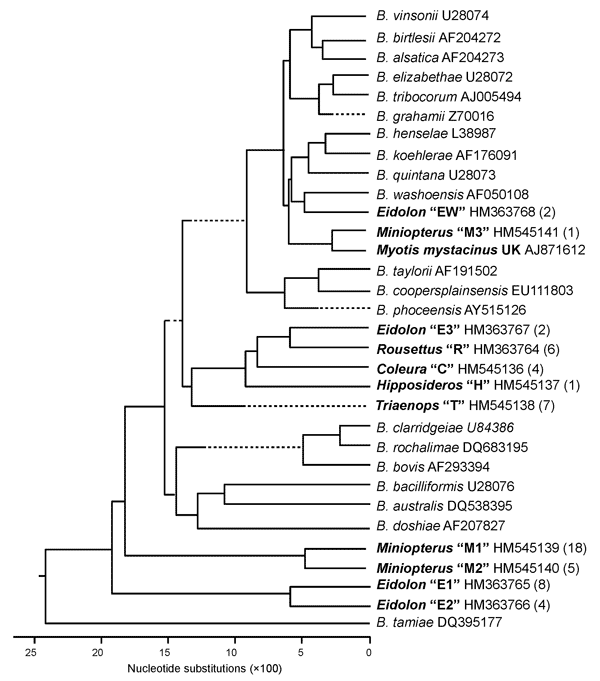Volume 16, Number 12—December 2010
Research
Bartonella spp. in Bats, Kenya
Figure 2

Figure 2. Phylogenetic relations among the citrate synthase sequences of Bartonella spp. genotypes detected in bats from Kenya and previously described Bartonella spp. The phylogenetic tree was constructed by the neighbor-joining method. Each Bartonella spp. genogroup detected in bats was provided with the Latin name of the bat genus from which the Bartonella strains were obtained (boldface), the proposed name of genogroup (quotation marks), the GenBank accession number, and the number of genotypes assigned to the genogroup (parentheses).
Page created: August 28, 2011
Page updated: August 28, 2011
Page reviewed: August 28, 2011
The conclusions, findings, and opinions expressed by authors contributing to this journal do not necessarily reflect the official position of the U.S. Department of Health and Human Services, the Public Health Service, the Centers for Disease Control and Prevention, or the authors' affiliated institutions. Use of trade names is for identification only and does not imply endorsement by any of the groups named above.